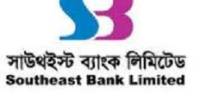One of the large businesses carried out by the commercial bank is foreign trading. Foreign trade refers to the trade between different sovereign nations or different countries. When two countries involve in buying & selling of goods/services between them with favorable conditions for both of them is called international trade. The trade among various countries falls for close link between the parties dealing in trade. The situation calls for expertise in the field foreign exchange operations. The bank, which provides such operation, is refereed to as rending international banking operation. Mainly transactions with overseas countries are respects of Import, Export and Foreign Remittance come under the preview of foreign exchange transaction. International trade demands a flow of goods from seller to buyer and payment from buyer to seller. In this case the bank plays a vital role to bridge between the buyer and seller.
Today most of the international transactions are made through banking channel.
Foreign exchange section is the important part of today’s concern ministry and the central bank play as the regulatory bodies in case of import & export. They have to consider various things to control the trade between countries. International Trade forms the major business activity undertaken by SEBL. The Bank with its worldwide network of correspondents and close relationships with key financial institutions provides an extensive trade services network to handle the customer’s transactions efficiently.
They offer a complete range of Trade Finance services. Their professionals’ works with their clients to develop solutions tailored to meet their requirements, through mobilizing their full range of trade services locally, and drawing on our global resources.
Legal Basis of the Functioning of Foreign Exchange Department:
Some national and international laws regulate the functions of this department. They are:
Foreign Exchange Regulation Act, 1947
Import and Export Control Act, 1950
UCPDC – 1993 revised & International Chamber of Commerce Publication No. 500
Governments’ Import & Export Policy
BCD Circulars issued time to time.
Functions of Foreign Exchange Department:
Table 5.1: Functions of Foreign Exchange Department –
Foreign Exchange Department | 1 | Facilitating Import Trade |
2 | Facilitating Export Trade | |
3 | Foreign Remittance | |
4 | Preparation of Statement |
Sections of the Foreign Exchange Department:
Foreign Exchange Department of Southeast Bank Limited, Mohammadpur Branch, has the following three sections. These are –
- Import Section
- Export Section
- Foreign Remittance Section
Import Section:
The section facilitates all import related banking functions of a business concern to import goods. These functions are given through the following modes:
- Import Financing: The import section provides finance to the importers, helps them in conversation of home currency into foreign currencies and paying to the exporters.
- Bank Guarantee: The function is done through opening of import L/C,
Back to Back L/C for importer and sanctioning credit limit for opening L/C s
to the customer.
Import Financing:
This section provides the following import financing or import credit options –
The function of this section is mainly to deal to with various components such as:
- Letter of Credit (L/C)
- Payment Against Documents (PAD)
- Loan Against Trust Receipt (LTR)
- Loan against Imported Merchandise (LIM)
Payment against Documents (PAD):
Payments made by the bank against lodgment of shipping documents of goods imported through L/C falls under this category. It is an interim advance connected with import and is generally liquidate against payments usually made by the party for retirement of the documents for release of imported goods from the custom authority.
Loan against Imported Merchandise (LIM):
Advances allowed for the retirement of shipping documents and release of goods imported through L/C, and taking effective control over the goods by pledges in go downs under the bank’s lock and key fall under this type of advance. This is temporary advance connected with import, which is known as post-import finance and falls under the category of ‘commercial lending’.
Loan against Trust Receipt (LTR):
Advances allowed for the retirement of shipping documents and release of goods imported through L/C. The goods are handed over to the importer under trust with the arrangement that sales proceeds should be deposited to liquidate the advances within a given period. This is a temporary advance connected with import and known as post-import finance.
Nature of Import Credit:
Documentary Credit: All import credit is generally documentary credit that is bill of exchange must contain documents to the title of goods. Mere presentation of bill of exchange by exporter is not sufficient for honoring the bill in case of Documentary Credit.
Clean Credit: Clean Credit requires no documents with bill of exchange for its honoring. It is not allowed in Bangladesh except with the prior approval of the Exchange Control of the country.
Letter of Credit:
A Letter of Credit (L/C) can be defined as “An arrangement where in a bank guarantees on behalf of his customers to make payment to the beneficiary upon presentation of documents specified in the credit”.
Types of L/C:
- Revocable/Irrevocable L/C.
- Confirmed/Unconfirmed L/C.
- Transferable L/C.
- Back to back L/C.
- Acceptance L/C.
- Revolving L/C.
- Red clause L/C.
- Green clause L/C.
The Southeast Bank basically deals with Irrevocable L/C, which cannot be amended or cancelled by the issuing bank at any moment and without prior notice to the beneficiary. It also deals back to back L/C, which is the Letter of Credit, provided by the bank to bank exporter to the importer to the importer the raw materials from abroad in order to produce the exportable commodity for the importer.
Revocable Credit: A revocable credit is a credit that can be amended or cancelled by the issuing bank at any time without prior notice to the seller.
In case of seller (beneficiary), revocable credit involves risk as the credit may be amended or cancelled while the goods are in transit and before the documents are presented or may be presented before payment has been made. Then the seller may face the problem of obtaining payment. On the other hand revocable credit gives the buyer maximum flexibility as it can be amended or cancelled without prior notice to the seller up to the moment of payment by the issuing bank at which the issuing bank has made the credit available. In the modern banking the use of revocable credit is not widespread.
Irrevocable Credit: An irrevocable credit constitutes a definite undertaking of the issuing bank, provide that the stipulated documents are presented and the terms and conditions are satisfied by the seller. This sort of credit is always preferred to revocable letter of credit.
Sometimes, letter of credit is marked as either ‘with recourse to drawer’ or ‘without recourse to drawer’.
Back to Back L/C:
Back to Back L/C is a type of import L/C which is opened against lien on an export L/C. Back to Back L/C mechanism involves two separate L/Cs. One is Master Export L/C and the other is Back to Back L/C. On the strength of the Master Export L/C bank issues Back to Back L/C. Southeast Bank, Mohammadpur Branch, mainly opens the Back to Back L/C for the Garments and Apparels Sector.
Limit for Letter of Credit:
Limit is a continuous advance facility given to the importer. The importer can open Import L/C and Back to Back L/C up to the sanction limit during the stipulated time for which the limit is sanctioned. Limit is generally sanctioned to the regular customers who make all their transaction with the particular branch. Limit sanction is not compulsory in all cases of opening L/C. In case of a single Import L/C to import some goods for only one time sanctioning limit is not necessary. For this type of case only an approval of the Head Office is required.
Parties Involved in Letter of Credit:
Opener/Buyer/Importer –
The person who opens the L/C is known as opener/buyer/importer of the L/C. The buyer and seller conclude a sales contract providing for payment by documentary credit.
Opening Bank –
The bank issuing the L/C in favor of exporter is known as opening bank. In the opening bank, L/C on request of importer according to the application of the importer.
Advising Bank –
The bank through L/C is advised. L/C will be sent to the beneficiary through their agent (corresponded bank) abroad. The duty of the advising bank is to authenticate the message so that the seller can act on it without any fear of forgery etc.
Beneficiary –
Seller and exporter in whose favor the L/C are opened. The beneficiary is normally the seller of goods who receive payment under documentary credit if he has complied with term and conditions there of.
Negotiating Bank –
The bank that is authorized to handle (purchase) the documents under L/C in the exporting country is known as negotiating bank. L/C will stipulate either a notified bank to negotiating in the seller’s country (unrestricted L/C).
Reimbursing Bank –
The bank that is (by the L/C issuing bank) to effect reimbursement is known as reimbursing bank. Reimbursing bank is authorized to honor the reimbursement claims in settlement of negotiation/acceptance/payments lodged with it by the paying/negotiation/accepting bank.
Confirming Bank –
A confirming bank is one which adds the guarantee to the open by another bank, thereby undertaking the responsibility of paying/negotiation/ acceptance under the credit in addition to that of the issuing bank. A confirming bank normally does so requested by the issuing bank.
Procedures for opening L/C:
An importer who is desirous to import goods from country will apply issuing bank for opening a L/C. The importer will provide an application mentioning the following aspects:
- Full particulars of application’s bank accounts.
- Types of business.
- Historical background.
- Amount of required L/C limit.
- Terms of payments.
- Name of importers goods.
- Repayments schedule and source of fund.
Some Important Documents of L/C:
An importer or L/C opener has to submit the following documents:
- Application form (provided by the bank)
- Import registration certificate
- Proforma Invoice
- Pour set of IMP form
- Insurance cover note
- VAT registration number
- Letter of Credit authorization form
Documents required at the time of Payment
The documents shown this category are known as export documents from the exporter’s side and import documents from importers side. These are:
- Forwarding
- Proforma Invoice/Purchase-Sell Agreement
- Bill of Exchange/Drafts
- Bill of Landing
- Commercial invoice/Invoice
- Consular Invoice
- Marine Insurance Policy
- Certificate of origin
- Packing list or mills specification
- Inspection Certificate/Survey Report
- Certificate of weighment and measurement
- Bill of entry
- Certificate invoice
Forwarding:
Forwarding is the letter which is given by the advising bank to the issuing bank. Several copies are sent to the issuing bank. All copies including original should be kept in the bank.
Proforma Invoice (P/I)
At the negotiating stage of a deal the buyer may require the seller the quota the goods showing their detailed particulars of order to enable him examine the competitive position.
It is offer by the seller to sell the goods and is exactly similar to customary invoice except that it is marked ‘Proforma’.
Sometimes it server the purpose of indent when there is no indenting agent as middle man in between the seller and buyer and L/C is opened in the basic of ‘proforma invoice’. It may however be noted that proforma invoice is accepted while opening L/C only special circumstances and allowed under import policy.
Bill of Exchange
The bill of exchange is particular instrument through which payment is effected in trade deals both internal and international.
Negotiable instrument act.1881 (section -5) defines, the bill of exchange is “an instrument in writing containing an unconditional order” signed by the mark, directing a certain person to pay, on demand or at fixed or determined future time, a certain sum of money only to or to the order of a certain person or to the bearer of the instrument.
Bill of Lading (B/L)
It is a document issued by the shipping company or it is given by shipping company to the client. Only one copy of Bill of Lading should be given to the client and the remaining copy should be kept in the bank.
A bill of lading is a document of title to goods entitling the holder to receive the goods as beneficiary or endorsee and it is with the help of this document on receipt from the exporter that the importer takes possession of the goods from the carrying vessel at the port of destination.
Commercial Invoice/Invoice
It is the seller’s bill for the merchandise. It contains a description of the goods the price per unit at a particular location, total value of the goods packing specifications teems of sale letter of credit, bill of lading number, etc.
There is no standard form for a commercial invoice. Each exporter designs his commercial invoice forms. The invoice is made out by the seller under his signature in the name of the buyer and must be submitted in of at least 3 copies. Its main purpose is to check whether the appropriate goods have been shipped and also that their unit price, total value, making on the package etc. are consistent with those given in other documents.
Certificate of Origin (C/O)
This is a certificate issued by a recognized authority exporting country of origin of the goods. It is usually by the chambers of commerce. Sometimes it is certified by local or Trade Representative of the importing country as per terms of the credit.
Packing List (P/L)
The exporters must prepare an accurate packing list showing item by item, the contents of the consignment to enable the receiver of the shipment to check its contents of the goods, number and makes of the packages, quantity, per package net weight, gross weight, measurement etc.
Lodgment of the Documents:
After receiving the documents from the exporters, the concerned of the department writer writes it in the PAD Register. PAD Register contains date, PAD number, L/C number, name of the drawer, name of the drawee, amount, number of copies of various documents, name of the imported items. This written procedure is called Lodgment.
Accounting Application:
While doing lodgment, the officer makes the following entries –
PAD Account……………………………….Debit
Southeast General Account…………………Credit
Exchange Gain Account……………………Credit
Export Section:
Export L/C operation is just reverse of the import L/C operation. For exporting goods by the local exporter, bank may act as advising banks and collecting bank (negotiable bank) for the exporter.
Export Process
The general framework for control of export is similar to that of imports but the objectives of import and export control are different. While import control of aimed at curbing imports to the extent possible, export control mainly aims at regulating the flow of foreign exchange into the country. The objective if the Government is to encourage export to the extent possible so as to earn valuable foreign exchange for the country. All efforts have to be made to boost of the country. Therefore, export control is mainly in such items which are essential needed in the country whose indiscriminate export may affect the domestic economy.
Two types of credit facilities allowed by the bank to the exporter in relation to export credit:
- Pre – Shipment Finance
- Post – Shipment Finance
Pre – Shipment Finance
When an exporter intends to ship the goods to an overseas buyer he/she needs fund for purchasing goods to be exported. He/she may also depend upon the bank for arranging credit facility for the supply of goods.
Post – Shipment Finance
Post – Shipment finance is more concerned with banks than per – shipment finance these types of finance starts after the goods have already been shipped.
Function of Export Section:
Export section performs different types of tasks which are given bellow:
- Back to Back L/C open.
- Foreign Documentary Bill for Collection (FDBC)
- Foreign Documentary Bill for Purchase (FDBP)
- Local Documentary Bills for Purchase (LDBP)
- Secured Overdraft (SOD) Export
- Packing Credit (PC)
- Accepted Bills Payable (ABP)
Back to Back L/C Open
It is the secondary documentary credit open by the advising bank in favor of a domestic/foreign supplier on behalf of the beneficiary’s original foreign letter of credit. As the original letter of credit of bank by import letter, it is called Back to Back L/C. There are three types of Back to Back L/C operate by Southeast Bank of Bangladesh Limited –
- Back to Back (Foreign)
- Back to Back (EDF)
- Back to Back (Local)
Procedures for Back to Back L/C –
- Exporter should apply for Back to Back L/C.
- Export L/C or master V under this lien.
- Opening of Back to Back L/C.
- Terms and conditions for Back to Back L/C
- The customer should have credit line facility.
- There should be a negotiating clause should be present on the Export L/C.
- There is no provision for blank endorsement of B/L.
- Payment clause is thereon the L/C issuing back – ensuring payment.
Processing for Opening of Back to Back L/C
An exporter desires to have an import L/C limit under back arrangement. In that case the following papers and documents are required:
- Full particulars if bank account.
- Balance Sheet
- Statement of assets and liabilities
- Trade license
- Valid bonded ware house license
- Membership certificate
- Income Tax declaration
- Membership of Articles
- Partnership deed
- Resolution
- Photography (all director)
On receipt of the above documents and papers the back to back L/C opening section will prepare a credit report, bank must obtain sanction from Head Office for opening of Back to Back L/C. Exporters prepare the documents and submit the same to the bank for negotiating.
Export Procedures:
A person desires to export should apply to obtain ERC from CCLNE. Then the person should take step for export purpose into the bank for obtaining EXP form. He/She should submit the following documents:
- Trade license
- ERC
- Certificate from concerned Government Organization.
After satisfaction on the documents submitted by the exporter the banker will issue EXP form to the exporter. Now exporter will be getting shipping and other documents from the shipment procedure. Exporter should submit all the documents along with letter of indemnity to bank for negotiation.
Preparation for Export Documents:
- Bill of Exchange or Draft
- Commercial Invoice
- Bill of Lading (B/L)
- Inspection Certificate
- Packing List (P/L)
- Export License
- Shipment Advice
- Certificate of Origin (C/O)
- Weight Certificate
- Quality Certificate
- EXP From
- Courier Receipt
General Verification
- L/C restricted or not
- Export submits documents before expiry date of the credit.
- Shortage of documents etc.
Particular Examination
- Each and every document should be verified with the L/C.
Cross Examination
- Verified one documents to another.
On receipt of documents it must be checked properly and then a proposal sheet would be prepared as per banks format indicate the full particulars of shipment and discrepancies under the signature of authorized person and should be placed to the Manager for disposal instruction or sanction.
Disposal of Documents
Before Dispatch:
– Rubber stamp must be affixed in all the documents
– Endorse the draft, B/L, insurance policy in favor of foreign correspondent as per L/C terms.
Flow Chart for Export –
- Goods ready for shipment.
- Inspection of the goods from the competent authority as per L/C.
- Prepared invoices and packing list and vessel booking particulars.
- Papers to be sent to C&F agent for shipment.
- C&F agent will do the custom formalities i.e. nothing/entry. Checking the goods as invoice and packing list inspection etc.
- C and F agent will take permission for shipment/hand over the goods to shipping company.
- After completing of all custom formalities the nominating shipping company received the goods for soil/land UN the ship and issued a receipt which is known as mated receipt.
- C and F agent handover the shipping receipts to the exporter or they can take the original B/L in payment of freight and other expenditure etc.
- Exporter may dispatch the shipment advice to the importer directly the as per L/C terms.
- C and F agent receives the original B/L from the relative shipping company and dispatches the same to the bank for negotiation or receives the (exporter) firm the shipping company directly.
- Exporter submits the all original and duplicate sets if documents to the bank for negotiation.
- After negotiation bank should dispatch the documents to the opening bank for delivery for the goods from the port.
Foreign Documentary Bill for Collection (FCBC):
Exporter can collect the bill through negotiation bank on the basic collection. Exporter in this case will submit all the documents to the negotiation bank for collection of bill from inspector. The exporter will get money only when the issuing bank gives payment. In this connection bank will scrutinize all the documents as per mentioned in L/C.
Foreign Documentary Bill for Purchase (FDBP)
When exporter sale all the export documents to the negotiating bank then it is known as FDBP. In this case the exporter will submit all the documents to the bank. The bank gives 60% – 80% amount to the exporter against total L/C value.
Local Documentary Bill for Purchase (LDBP)
- Incoming of L/C customer with the L/C negotiate.
- Documents given with L/C.
- Scrutinizing documents as per L/C terms and conditions.
- Forward the documents to L/C opening bank.
- L/C issuing bank give acceptance and forward acceptance letter.
- Payment given to the party by collection basis or by purchasing.
Secured Overdraft (SOD)
Secured Overdraft is one of credit facility enjoying by the exporter from export section. It is generally given to meet the Back to Back L/C claim. Sometimes it is given to the exporter by force for meeting the Back to Back L/C claim due to daily of master L/C payment.
Packing Credit (PC)
It is one kind of credit sanctioned by the department to meet the exported goods shipment timely. The bank will give the facility deduction of Back to Back L/C value.
Foreign Remittance Section:
There are two types of remittances –
- Outward Remittance
- Inward Remittance
Outward Remittance
On March 24, 1994 Bangladesh Taka was declared convertible for current account international transaction. As a result remittance becomes more liberalized. Outward remittance include sale of foreign currency by T.T., M.T., Draft, and T.C or in cash for private, official and commercial purpose.
There are different types of outward remittance:
Private Remittance –
- Family Maintenance
- Membership / Registration fees etc.
- Education
- Travel
- Health & Medical
- Foreign Nationals
- Remittance for Hajj
Official and Business Travel –
- Ta\ravel Quota for Importer
- Exporters Retention Quota
Inward Remittance
The term inward remittances include not purchase of Foreign Currency by T. T., M. T. and Draft etc. but also purchase of bills purchase of T. C. Utmost care should be taken while purchasing currency. Note that, T. C., D.D., & similar instrument for protection the Bank from probable loss as well as safety of the Bank officials concerned.

















